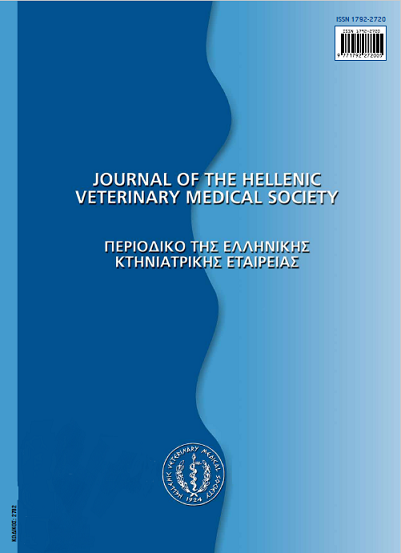A new extremely hazardous viral disease in southeast Asia which affects both swine and humans
Abstract
Since the end of 1998, incidents of a serious viral encephalitis have been reported in Malaysia and recently in Singapore, a 50% of which led to death. According to the updated information on this new disease, its transmission is related to swine. At first, it was believed that cause of the encephalitis was the virus of the Japanese encephalitis type B. However, after the proper laboratory examinations, it was proved that a new, unknown virus was related to the etiology of the incidents. This virus belongs to the Paramyxoviridae family and has many common characteristics with the Hendra virus, without being the actual one. The first name attributed to the virus was Hendra like virus, but recently the name Nipah virus prevails.
Article Details
- Zitationsvorschlag
-
TZIKA (Ε. Δ. ΤΖΗΚΑ) E. D., SAOULIDIS (Κ. ΣΑΟΥΛΙΔΗΣ) K., ALEXOPOULOS (Κ. ΑΛΕΞΟΠΟΥΛΟΣ) K., & KYRIAKIS (Σ.Κ. ΚΥΡΙΑΚΗΣ) S. C. (2018). A new extremely hazardous viral disease in southeast Asia which affects both swine and humans. Journal of the Hellenic Veterinary Medical Society, 50(2), 144–146. https://doi.org/10.12681/jhvms.15708
- Ausgabe
- Bd. 50 Nr. 2 (1999)
- Rubrik
- Special Article

Dieses Werk steht unter der Lizenz Creative Commons Namensnennung - Nicht-kommerziell 4.0 International.
Authors who publish with this journal agree to the following terms:
· Authors retain copyright and grant the journal right of first publication with the work simultaneously licensed under a Creative Commons Attribution Non-Commercial License that allows others to share the work with an acknowledgement of the work's authorship and initial publication in this journal.
· Authors are able to enter into separate, additional contractual arrangements for the non-exclusive distribution of the journal's published version of the work (e.g. post it to an institutional repository or publish it in a book), with an acknowledgement of its initial publication in this journal.
· Authors are permitted and encouraged to post their work online (preferably in institutional repositories or on their website) prior to and during the submission process, as it can lead to productive exchanges, as well as earlier and greater citation of published work.












